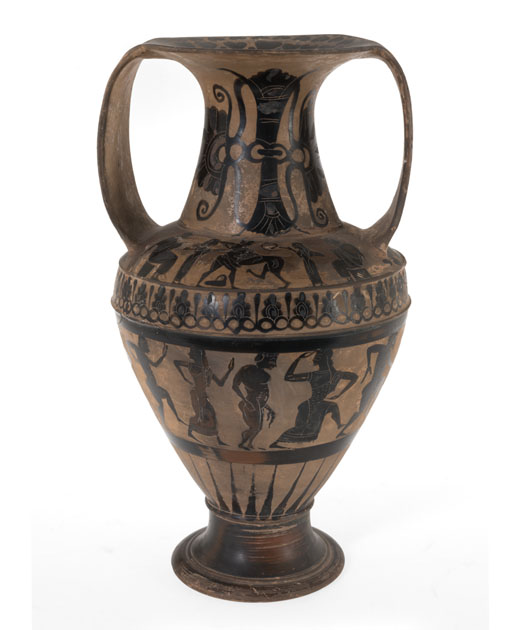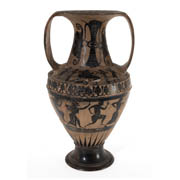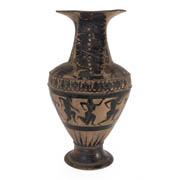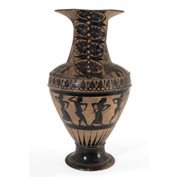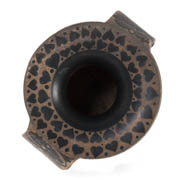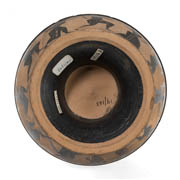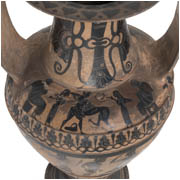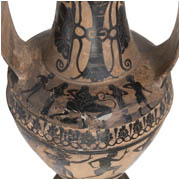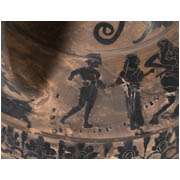Details
- Object type
amphora; two-handled vase
- Place Associated
Greece, Cervetri (place of manufacture)
- Date
6th century BC
- Dimensions
overall: 329 mm x 184 mm x 170 mm 1136 g
- Description
-
This Nikosthenic amphora is decorated in black figure technique and was excavated at Cerveteri, Italy.
Nikosthenes was an Athenian vase painter of the late 6th century BC whose workshop produced amphorae in this characteristic shape – now known as a Nikosthenic amphora - which were exported across the Mediterranean to the wealthy Etruscan city of Caere, modern Cerveteri. His vases can be identified both stylistically but also because he added the phrase “ΝΙΚΟSΟΕΝΕS ΕΓΟΙSΕΝ” “Nikosthenes made me” to large numbers of the products of his workshop. Over one hundred of these are now in museums around the world. The painted design on the shoulders of this vessel portray a mythological scene of Heracles or Hercules fighting the Nemean Lion which is a common motif on the shoulders of Nikosthenic amphorae. Round the body of the vessel, there is a frieze of twelve running or dancing figures – 5 nude young men, 1 nude bearded man and 6 maenads who are dressed in a long chiton and nebris -fawn skin. The nebris is a symbol of Dionysus and so this seems to be a depiction of a Dionysiac ritual.
In the beginning of the nineteenth century, Cerveteri was a small sleepy, rural area of Italy but from the 1820’s onwards, excavations there uncovered the remains of the Etruscan city Caere and its cemeteries. The richness of the finds attracted antiquaries and tomboroli – tomb robbers – who uncovered and removed priceless treasures. By the middle of the century the brothers Augusto and Alessandro Castellani were buying antiquities as they were found both to augment their own collections and also to sell on to collectors elsewhere in Europe. In 1865-1866, Paulo Calabresi, a local landowner, uncovered four vases signed by the 6th century BC vase painter Nikosthenes. He sold these, probably to Alessandro Castellani who in turn sold this vase to James Stewart Hodgson, a wealthy London stockbroker. The amphora was in Hodgson collection by 1888, when it was shown at the Exhibition of Greek Ceramic Art held at Burlington House, London. Hodgson’s daughter, Agatha, 6th Marchioness of Sligo inherited the vase and sold this on to the dealers Spink and Son by April 1957 when it was purchased for the Burrell Collection.
Provenance: Paulo Calabresi, Italy, 1866; Alessandro Castellani, Italy by 1888; James Stewart Hodgson, London by 1888; Agatha Stewart Hodgson, 6th Marchioness of Sligo 1899; Spink and Son, London; from whom purchased by Sir William Burrell on 8 April 1957.
- Credit Line/Donor
Gifted by Sir William and Lady Burrell to the City of Glasgow, 1944
- Collection
Burrell Collection: Graeco-Etruscan Items
- ID Number
19.163
- Location
Burrell Collection
